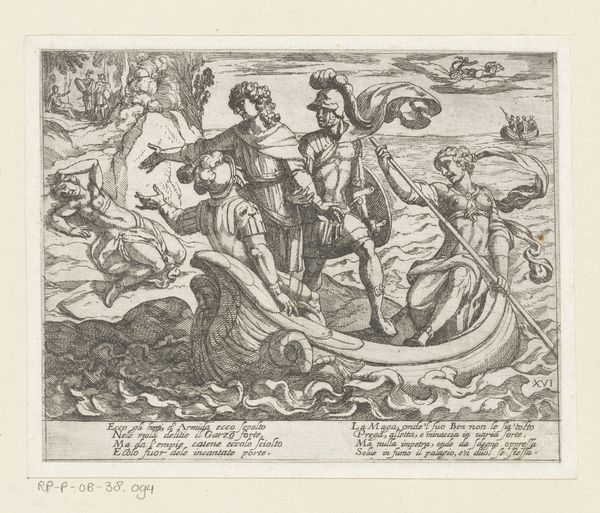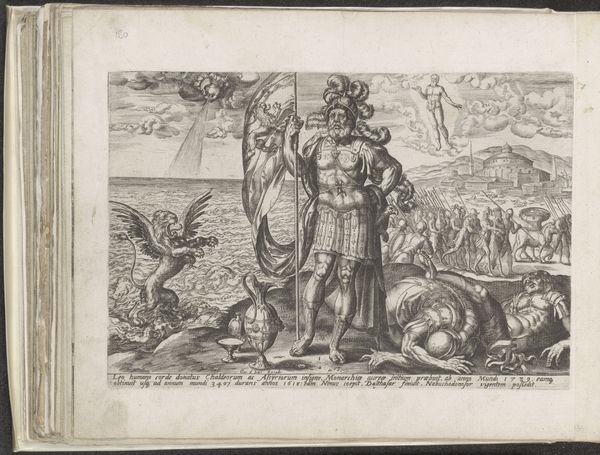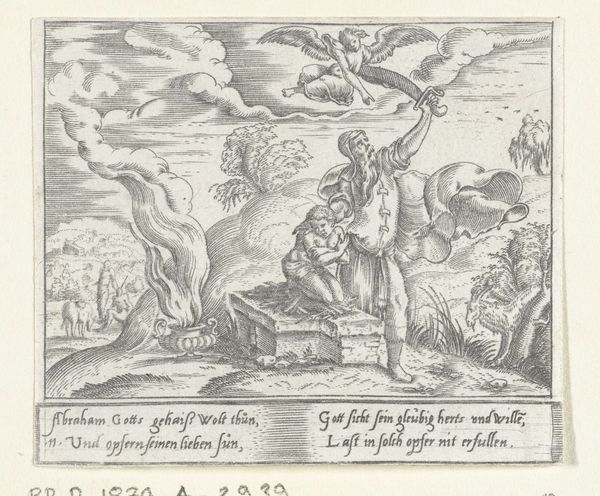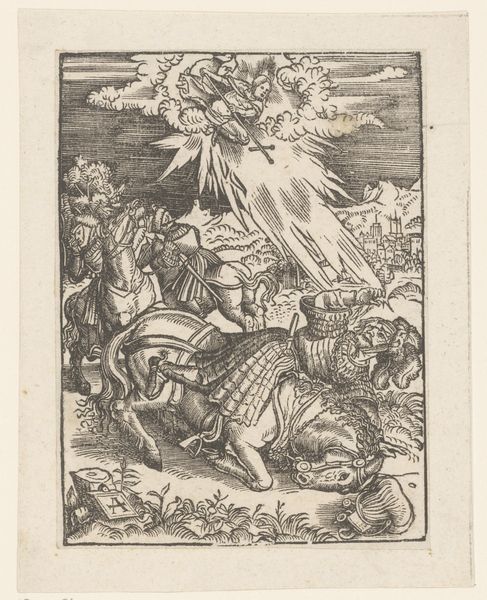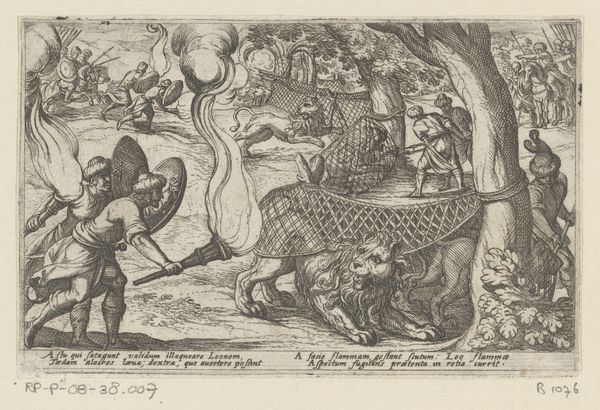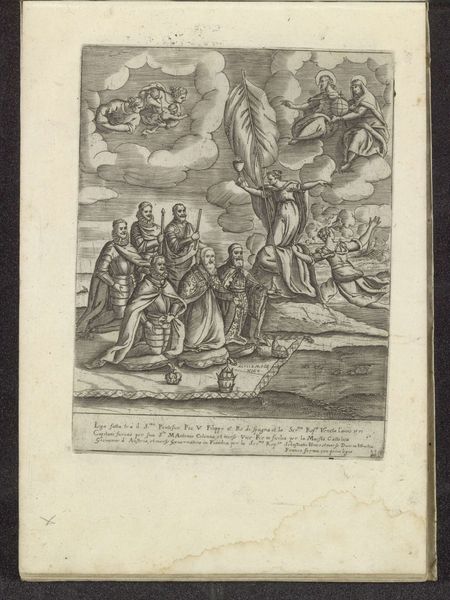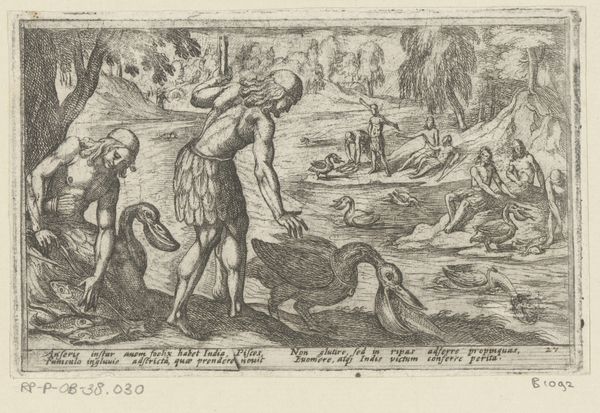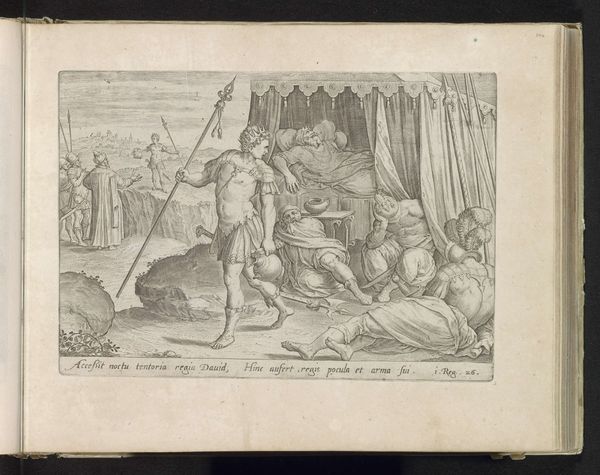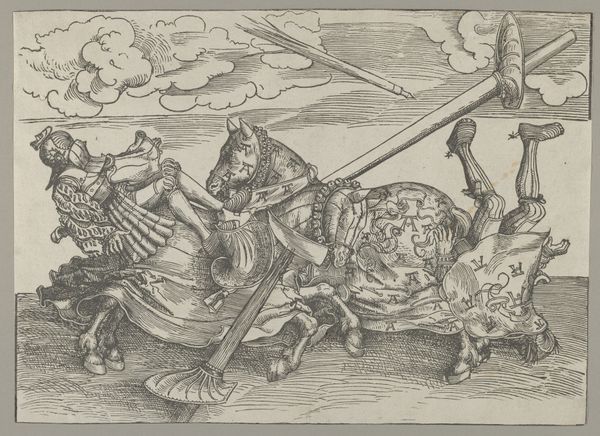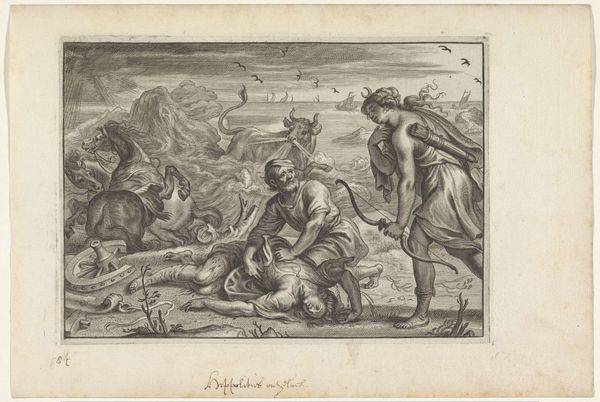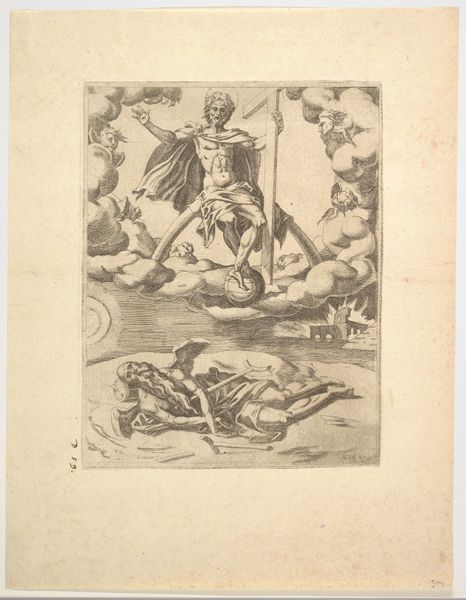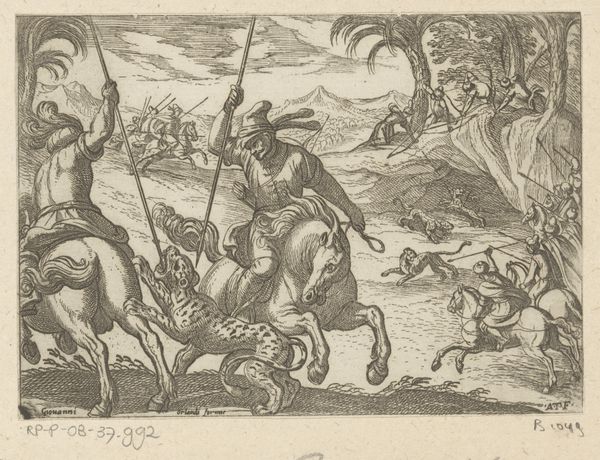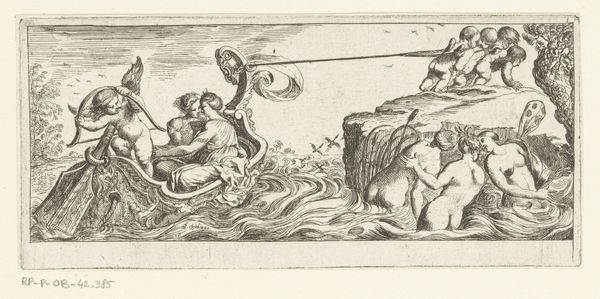
print, engraving
#
narrative-art
# print
#
figuration
#
11_renaissance
#
line
#
history-painting
#
engraving
Dimensions: height 194 mm, width 285 mm
Copyright: Rijks Museum: Open Domain
Editor: This is an engraving from before 1574 called "Babylonische, Medische en Perzische koninkrijken," made by Wierix and currently held at the Rijksmuseum. There is so much detail packed into this small print! What strikes me most is how power, destruction, and divinity are all mingled. What do you see in this piece? Curator: The scene depicts Cyrus the Great overthrowing the Babylonian, Median and Persian kingdoms. Given its date, think about the print's potential political purpose in its time. Editor: Political purpose? You mean, like propaganda? Curator: Yes, perhaps promoting certain rulers, or critiquing power structures? The historical context is essential. The rise and fall of empires are depicted but how are these events shaped in popular imagination, in collective memory? And who is commissioning this print and for what audience? The figures are positioned theatrically, aren't they? Note the vanquished leader sprawled on the ground and the heavenly body piercing clouds that looms behind Cyrus. Editor: Right, he's not just a conqueror, but maybe divinely appointed? Curator: Exactly! It prompts us to consider the role of art in legitimizing power, shaping national identity. Who decides what stories we tell, and how we tell them visually, becomes quite significant, wouldn't you say? The line work and detail are amazing given the likely limited printmaking processes, especially to reinforce ideal power structures. Editor: I hadn't considered the social implications, mostly focused on its artistic merits. Thanks, that gives me a lot to think about in relation to history and context!
Comments
No comments
Be the first to comment and join the conversation on the ultimate creative platform.
